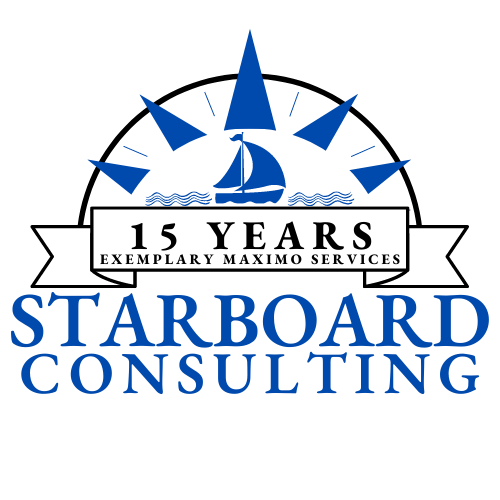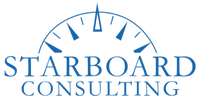To celebrate our 15th anniversary, we’ll be spending some time over the next few weeks with Starboard’s founders, Karen Buck and Amy Tatum. Join us this week as we dive into Starboard’s client offerings.
Karen Buck, Executive Director for Starboard, has over 25 years of experience providing Maximo implementation services to the Utilities industry, including Electric, Water, Wastewater, and Gas. She holds a Master’s in Business Administration and a Bachelor’s in Accounting.
Amy Tatum, P.E., Vice President of Technology and Solution Director for Starboard, has over 20 years of experience providing Maximo implementation services to the Utilities and Airport industries. She also has extensive knowledge of the Utilities, Transportation, and Spatial industry/add-on solutions and leads Starboard’s project delivery teams. Amy holds a Master’s in Business Administration and a Bachelor’s in Electrical Engineering. In 2022, Amy was named an IBM Champion for her commitment to the Maximo community.
Can you talk about your favorite client success story?
It’s impossible to pick just one. We’ve built some creative solutions, we’ve solved a lot of people’s problems, and we’ve been able to do things that other consulting companies who went before us could not. On more than one occasion we’ve come in to fix things that weren’t working quite right.
Can you talk about some of the biggest client challenges that you were able to resolve?
We had one client that was a 5.2 to 7.5 upgrade, so it was across multiple versions and was a big project. They had over time become very siloed in their Maximo usage, because they’re geographically dispersed across a large state, so there are people at one plant doing one thing, and then people at another plant hundreds of miles away doing something else. One of the things we did with that project is when we first got started, we went to every site, talked to the people, and got an understanding of where they were and what their pain points were. We worked hard to instill a common vision across all the sites, where we started taking down those silos and getting them to do things consistently across the enterprise. This ended up making the upgrade smoother because we had taken the time to get to know them personally and build that common vision.
Our first big competitive win was a multi-department utility with electric, water, wastewater, and gas. Prior to the award, we did a LOT of preparation for the demo. One of the challenges when doing demos of Maximo, particularly if there are a lot of scripts to cover, is that it can be very intimidating to the person watching it because those doing the demo are constantly switching between roles. It makes Maximo feel very complex to typical users and they worry if they’ll be able to work in Maximo at all. One of the things we did to address that concern is to use different colored hard hats. Every time we changed our role in the system, we literally changed our hats, so it created an obvious physical break in the activity. Viewers were able to clearly see what kinds of activities a maintenance supervisor might perform, for example, and when we needed to move to a different role, we would put on a different hat. It made the demo fun, which made it memorable for the client, but it also helped break up that constant bombardment of information. It was very exciting when we won that one, and here we are 15 years later, and they’re still our client.
How have you seen customer needs evolve over the years?
There have been many changes, one of which is the evolution of mobile. When we first started working with Maximo, mobile was very much in its infancy. Workers used paper maps, which they would get reprinted maybe once a quarter to reflect changes in the system, and they would draw on their maps as they collected information. Now, mobile is ubiquitous, and the expectation is that people will immediately have access to whatever information they need. This mindset has impacted how assets are managed and how clients expect asset management systems like Maximo to work.
Another change has been highlighted by the current “great resignation.” In previous generations, people could work at a job for 30 or 40 years, and they would know anything and everything about the system they worked on. Now, however, people don’t stay with the same place as long. The result of this is every time employees leave, certain information leaves with them, so it’s become critical to capture what people know and how they do their jobs. This ensures the next person coming in isn’t starting over from square one and the duties of that role don’t grind to a halt.
Lastly, there’s been a big shift towards efficiency and lean operations; companies are very focused on how to do more with less. Since everything has gotten so much more competitive, clients need to be able to justify why they need money, what exactly it will get spent on, and how it’s going to improve their operations. Being able to put in a tool like Maximo that helps people do their jobs better, more efficiently, and more effectively is important.

